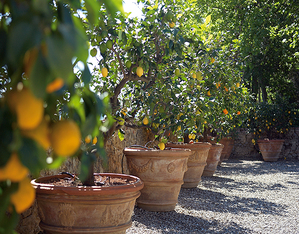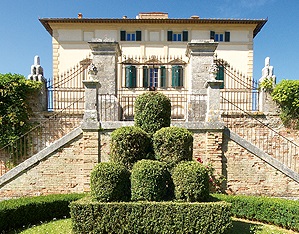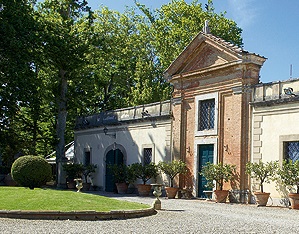In 1843, Repetti anointed this estate the “queen of the Sienese villas”. Attributed to Baldassarre Peruzzi, the Villa and surrounding terraced garden are in close symbiosis with one another, and blessed by perfect symmetries throughout. Cardinal Flavio Chigi, the nephew of Pope Alexander VII, used to retire here to rest, or to devote himself to his favourite pastime: hunting.
Featuring a Villa, service buildings, a chapel and a lemon house, this estate was originally built in the early 16th century for the Chigi family on a steep ridge with stunning views over Siena. Agricultural and service buildings stand on the far side of a long courtyard, bounded to the north by a grove of oaks. The garden is laid out over a number of terraces connected by flights of stairs, and is arranged along two main axes. The axis tangential to the villa’s rear elevation leads to the lemon garden, which is divided into four sections, each sub-divided into four more sectors. The balance and perfect symmetry here show that the design is from the 16th century. The refined geometrical layout is highlighted by boxwood hedging along the lawn beds, which feature lemon trees in terracotta basins. This space is further embellished by an exedra framed by a group of cypress trees at the end of the east wall, with a ramp that leads from this terrace to what was once the pomarium – today divided up into geometric flowerbeds. Another narrow terrace closes the east side of the garden, which features an orchid greenhouse. The second axis, running out from the villa’s main elevation, takes in two terraces. The first, known as the “pratini” terrace, was planted with lime trees until a few decades ago; they were removed in 1963; the perimeter wall is covered in wisteria. A double staircase leads to the botanical garden– in the 16th century, a simple kitchen garden – created in the second half of the 19th century by Bonaventura Chigi to experiment with acclimatizing exotic plants for ornamental purposes; this space is occupied by flower beds, bordered by porous rocks, and lies in the shade of a Ginkgo biloba and cedar of Lebanon. The line of perspective resolves at a hemicycle-shaped fishpond.




